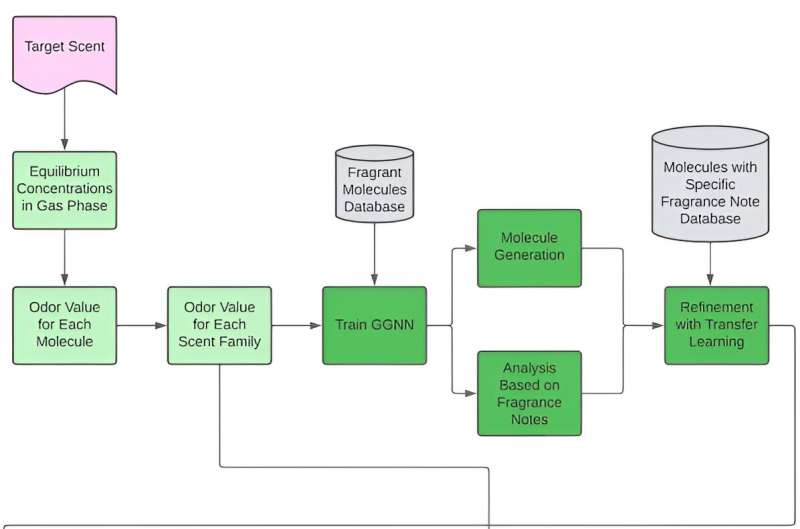March 12, 2024 report
This article has been reviewed according to Science X's editorial process and policies. Editors have highlighted the following attributes while ensuring the content's credibility:
fact-checked
preprint
trusted source
proofread
Using AI to replicate odors and validating them via experimental quantification of perfume perception

A small team of chemical engineers at the Norwegian University of Science and Technology, working with a colleague from IA Murins Startups, has developed a way to use machine learning to replicate odors and then validate them using experimental quantification of perfume perception. The group has posted a paper describing their research on the arXiv preprint server.
Prior research has shown that it is possible to use machine learning/AI applications to generate molecules with desired odors, whether for perfumes or for chemicals added to foods. But such applications, the researchers note, do not go far enough in helping to develop truly useful fragrances.
Molecules in a given perfume interact with the environment prior to their introduction to the nose—and such interactions can have a profound effect on them. The researchers also point out that perfumes and other odor-emitting materials have time-sensitive components that lead to changes as time passes.
Perfumes, for example, have what are described as "top notes"—those odors that are smelled soon after emittance into the air. They also have middle notes and bass notes, which can hang around for hours or days.
In this new study, the researchers attempted to create an AI application capable of taking all such factors into consideration, by first focusing on just two existing fragrances.
They began their work by creating a basic AI application that they trained on a database of known molecules with known fragrance notes. They created a host of molecules that matched certain desired characteristics, then they chose a subset of the created molecules that would be expected to evaporate in ways similar to the original fragrance. They finished by using another AI to reduce and minimize mismatches.
After a logic check, they found that the recipes for their molecules were close matches to those they had originally been looking for. They plan to continue working with their applications to reach the ultimate goal of using AI to generate any odor that is desired, on demand—a development that could give computers and other devices the means to generate odors in ways similar to current image generation.
More information: Bruno C. L. Rodrigues et al, Molecule Generation and Optimization for Efficient Fragrance Creation, arXiv (2024). DOI: 10.48550/arxiv.2402.12134
Journal information: arXiv
© 2024 Science X Network





















